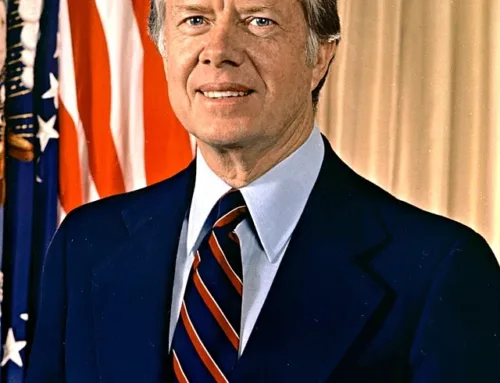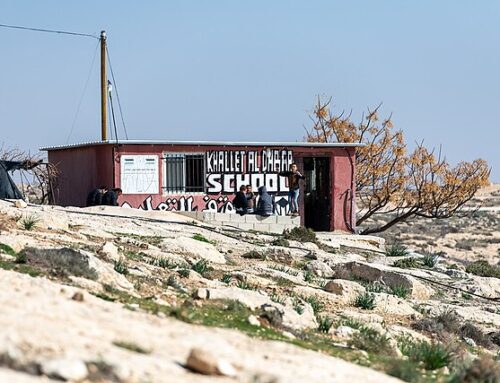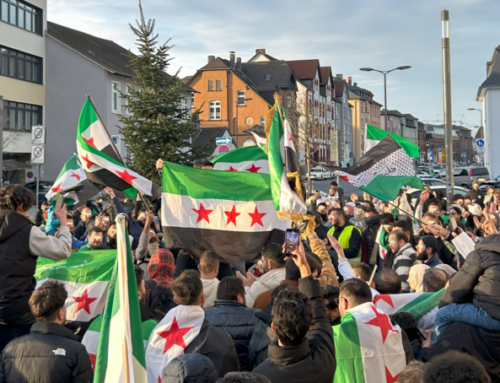This is a review article by Dr. Thomas G. Mitchell of Patrick Bishop’s “The Reckoning: Death and Intrigue in the Promised Land: A True Detective Story” (Harper, December 2014, 320 pp.). Mitchell’s most recent book, “Likud Leaders” (McFarland, 2015), features two chapters on Yitzhak Shamir, who succeeded Avraham Stern as the leader of Lehi (better known as the Stern Gang).
Like the Palestinians, Lehi adopted a no-compromise maximalist position on borders—from the Nile to the Euphrates—at a time when it could merely harass the British authorities in Palestine. And like the Palestinians’ unsavory foreign allies, Lehi attempted to forge alliances with Fascist Italy, then Nazi Germany, and finally the Soviet Union—all without success. Just as the Palestinian armed struggle has targeted many fellow Palestinians, Lehi ended up killing nearly as many Jews as Arabs and British, because members turned to robbing Jewish merchants in order to raise funds and they shot ordinary policemen on sight, many of whom were Jews.
Lehi emerged from activist elements of the Irgun who used terrorist attacks on Arab civilians as a counter to Arab terrorism during the Arab Revolt of the late 1930s. And just as the Palestinians commemorate their shaheeds (martyrs), starting with Imam Izz al-Din al-Qassem, who was killed by the British in November 1935, Lehi turned its founder Avraham Stern into a martyr by spreading the story that he had been murdered by British detectives when he was captured in February 1942.
This book is the story of Stern and the author’s search to learn the truth about his death. Stern was a charismatic figure who aroused intense loyalty from his immediate subordinates. It was by using Stern’s death as an example that Yitzhak Shamir was able to resurrect Lehi after his escape from prison six months after Stern’s death. Bishop decided to write the book because he claims that Stern’s death changed the history of the Middle East. In reality it was a mere historical footnote.
Stern died at age 35 after starting a premature insurrection against the British. His organization was crushed within weeks, with the vast majority either killed or captured and interned. Shamir managed to rebuild Lehi, which then relaunched its revolt against the British with an attempted assassination of the British High Commissioner in Palestine in August 1944 and the successful assassination of Lord Moyne, the senior British official in the Middle East, in Cairo in November 1944. But this was after Menachem Begin had already begun the Irgun’s revolt in February 1944. For the next four years, Lehi was the Irgun’s junior partner in the Revolt.
Lehi largely proved to be an ideological cul de sac: only two Lehi members emerged to become career politicians. Shamir became a member of Herut, Begin’s party, over two decades after he left Lehi, and went on to become head of the Likud and twice Israeli foreign minister and prime minister. But as a politician he was a disciple of Jabotinsky and Begin, not of Stern. The other politician was Lehi’s radio voice, Geula Cohen, who also joined Herut about the same time as Shamir did. Five years after being elected to the Knesset, she formed the Tehiya party in opposition to Begin’s return of the Sinai to Egypt in 1979. She was the star of Tehiya until it collapsed in 1992 after precipitating the election that the Right lost. But she had joined Lehi as a teenager the year after Stern was killed, so she never knew him personally.
If Lehi was politically a dead end why is it important to remember it today? The book illustrates the manner in which nationalist myths are formulated through ambiguity. Stern was killed under mysterious circumstances. Bishop was unable to unravel the definitive truth as to whether the killing was murder or justifiable homicide; he presents the contradictory evidence in the final two chapters of the book. The Hebrew Revolt needed martyrs and so it became murder.
Stern had many of the characteristics of the ideal martyr: matinee idol looks, fluency in both Greek and Latin in addition to Hebrew and Polish, and an aborted academic career as a classicist sacrificed for the cause of Zionism. Ironically he had been the protégé of pacifist Hebrew University head Rabbi Judah Magnes. This is something that we should bear in mind when we hear reports from Palestine and Israel of murders. How much is truth and how much is nationalist invention?
After Shamir became prime minister for the second time in 1986, there was much interest in Lehi in Israel and abroad with several books written on the murder of UN mediator Count Folke Bernadotte in September 1948. I think that Stern and Lehi have by now received all the historical attention that they merit, but we could still use a full biography of Shamir in English, and a book on Geula Cohen and Tehiya.





really? nothing to say about natan yalin-mor or his legacy? that’d be a great discussion for those aspiring to be progressive zionists. (shamir’s auto-biography is already in english)
Ben,
Bishop barely mentions Yellin-Mor in his Stern bio: he notes that he was Stern’s conduit to the Germans in Dec. 1941 and that after escaping from Mizra detention camp in Nov. 1943 he became one of the troika of Lehi leaders. I didn’t mention him because his formal political career lasted for only two years (1949-51) unless you count his time as a member of the board of the Revisionist Party in Poland in the 1930s. I do have a long chapter on him in my latest book, which is on apostates from the Right–if I can find a publisher you can read about him there. If you can read Hebrew I recommend Nehemiah Ben-Tor’s “Nosei Lapid haHerut” (Torchbearers of Freedom), which consists of short bios (90-110 pp.) of Stern and his three successors.
A number of points.
1. Yalin-Mor’s political career lasted far longer than you give credit for. You are listing the time he spent in the Knesset. But he spent another 25 years as a far-left writer and organizer, working with people such as Uri Avnery. His political influence at the time was considered marginal, but in the long term, his grassroots and ideological political work have borne fruit.
2. I don’t think it is correct to measure the ideological influence of a movement (Lehi, in this case) based on how many of its members became professional politicians. Yalin-Mor was not the only socialist or communist member of Lehi to go on to do organizing. Others became famous Israeli writers and important left-wing organizers. (By the way, there were other Lehi politicians, too; for example, fighting alongside the atheist Yalin-Mor in Lehi was Abraham Ravitz, who later became a rabbi and represented Haredi parties in the Knesset.)
3. The evidence for Stern having been being murdered was made pretty conclusive when one of the British detectives in the room finally told the whole story. I quote him in my English biography, Stern: The Man and His Gang, published in 2011. But the truth is it doesn’t much matter. Stern would have become a “martyr” whether he was murdered or shot trying to escape, only the details of the story would have changed. And I don’t think it was Shamir who developed the image of Stern as much as the ideologues of Lehi, Israel Eldad and Nathan Yalin-Mor. Shamir was the operations man.
4. Except for a brief period when Lehi members were being shot by police with abandon, Lehi did not shoot police “on sight”; even then they didn’t really shoot on sight, only when confronted or pursued by the specific policemen, and, in 1946-47, when they targeted British police or soldiers. And it is untrue to suggest they killed as many Jews as Arabs and British. In Stern: The Man and His Gang I list all of Lehi’s operations and anyone can check for himself. Your review makes many comparisons to the Palestinians, and it is worth noting the change in the use of the word terrorist. For Lehi never deliberately targeted a woman, child, infirm or elderly Englishman.
5. Regarding Arabs, Lehi’s war was against the British. Until the 1947-48 Arab-Israeli war, Lehi tried to forge alliances with the Arabs to fight the British. It was only late in the game, when that failed, that Lehi joined the Hagana and Irgun in fighting Arabs.
Zev,
I am honored that you have commented here. Your two books were quite useful in writing the chapter on Shamir’s background for my book “Likud Leaders.” Colin Shindler in his review of Bishop’s book quotes a figure in the high 40 percentile–I believe 48%–for the percentage of Lehi’s victims who were Jews over eight years. Maybe saying that Lehi shot policemen on sight is an inaccurate phrase, but they shot them when asked to produce ID papers. Shindler wasn’t able to tell me immediately where he got the figure from, but I presume that it may have included those Lehi members killed in action.
As far as the ideological influence of Lehi, I think that most Israeli historians and political scientists would agree with me. Just look at its leadership: Eldad the ideologue couldn’t even get a safe seat in Tehiya decades later and was defeated in his own run for the Knesset; Yellin-Mor was defeated in a 1969 Knesset run; those two who really had an influence were those that I mentioned. While Yellin-Mor had a long career as an editor and journalist on the Left, his real influence as far as accomplishment was probably very limited. I wasn’t aware of Ravitz, but when one claims that the influence of Lehi was felt simultaneously in Rakakh and the Haredim it throws into question what that influence really was.
Bishop presents a fair amount of information both in support of the contention that Yair was deliberately murdered and in opposition to that, information that you did not present in your biography.
As far as terrorism goes, while Lehi did not deliberately target ordinary individuals (except perhaps at Deir Yassin), many of those who were Lehi members including Shamir did so when they were in the Irgun in 1937-39. You yourself allow that these operations were terrorist operations. I have written in a previous review on this site that I didn’t consider either the Lehi or Etzel operations against the British to be terrorism.